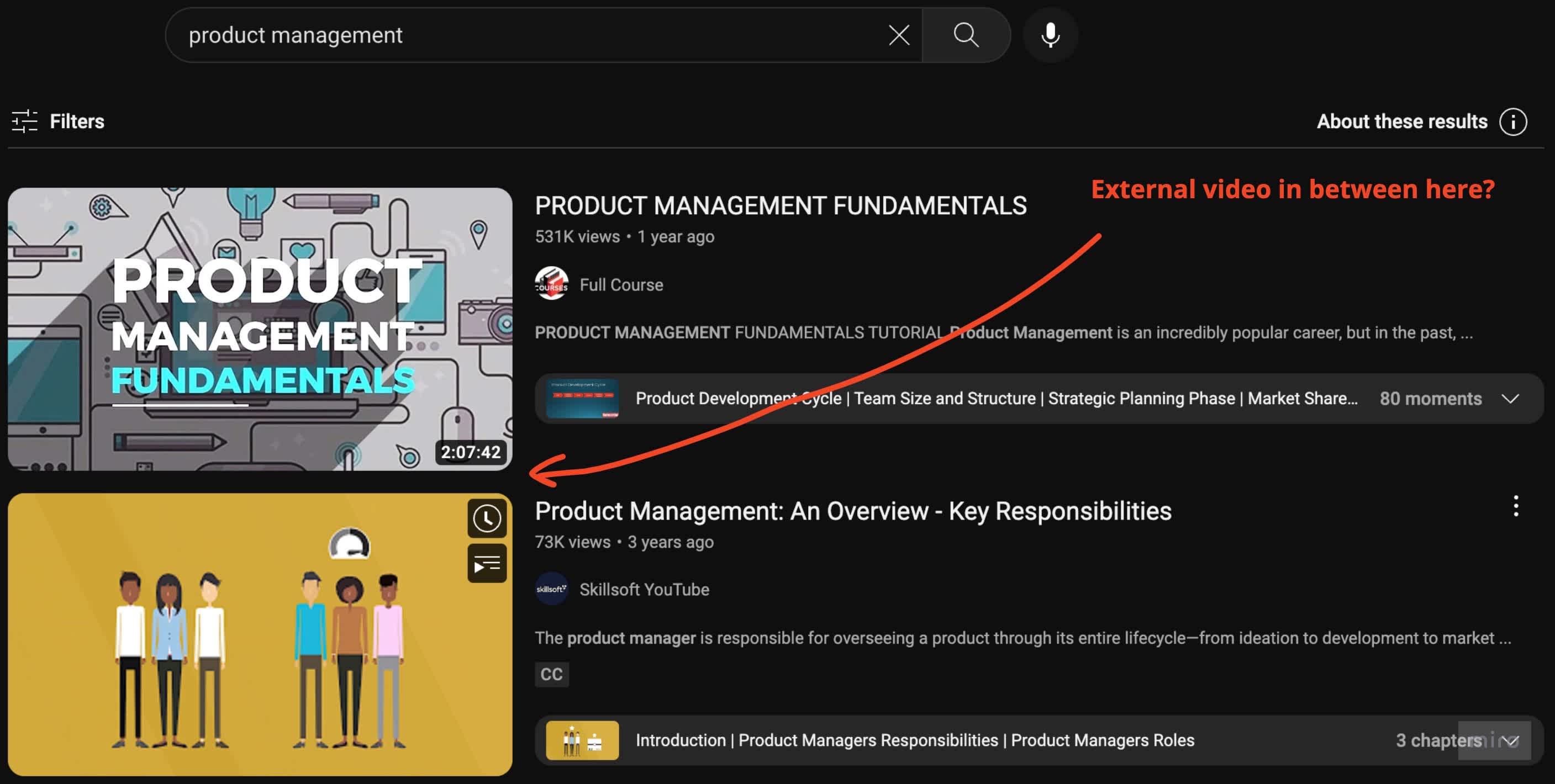What Is The Consistency VS. Comprehensiveness Dilemma?
I first stumbled across this dilemma of “consistency vs. comprehensiveness” when I learned about the early days of YouTube.
One of the dilemmas the team faced was whether or not the search results on YouTube should include videos that were hosted elsewhere on the web.

The way they ended up phrasing the dilemma was:
“Will our customers prefer a consistent or comprehensive search experience? Will they prefer search results that always show the most relevant videos, sometimes including vides outside of YouTube (comprehensive), or will they prefer that it's always only videos from YouTube (consistent)?”
As you can imagine, both directions could have fostered a great product.
Including external videos would’ve given YouTube so much more content to show users.
However, it would also have meant that they lost control of the experience by sending people off-site.
What would you have done?
Looking back, it’s easy to argue that they should’ve chosen consistency over comprehensiveness, but what if YouTube had not grown as it should have?
Would you change your decision?
A Consistent VS. A Comprehensive User Experience
This dilemma is only relevant in digital products where users (are expected to) come back again and again.
If you run an ecommerce store where customers purchase once and never come back, I'd argue that there are more important aspects of the business to focus on.
A comprehensive user experience generally means multiple choices and sets of options.
Increased comprehensiveness might sound bad from a resource and product development aspect. But as a user, it translates to increased abilities, which users rarely dislike (if you ask them).
This dilemma is one you could imagine all product teams face every time they decide to build something new or when reviewing strategic plans.
In the end, the product strategy should include a plan to win the market. That includes thoughts on competitive advantages which should assess things like:
Do we approach the market with a broad and thin or narrow and deep approach?
Do we prefer simplicity or complexity?
Do we want to excel at a few things or be mediocre at a lot of things?
Let’s have a look at a few examples from day-to-day products.
Examples Of "Consistent Or Comprehensive" Dilemmas
I've thought of multiple apps and services that people use regularly and how their dilemmas might have looked.
Imagine having to choose between how each of these products are now versus:
Uber: Your ride would get there twice as fast, but in some cases, you'd have to pay in cash because the driver wouldn't accept credit cards.
Spotify: A bigger catalog of music (including those weird remixes only YouTube has), but some tracks weren't allowed to be played out loud on speakers due to copyrights.
UPS: They'd always deliver really fast, but some packages would only be available for delivery at pickup points and not for home delivery.
IKEA: They'd offer much more items online than in-store but only some of them could be delivered to your doorstep.
Wolt: They'd have less restaurants, but the Wolt+ subscription allowed free delivery on everything instead of just selected restaurants.
Again, I'm not saying one side is better, but it's interesting to imagine the dynamics and the discussions behind the choices the product teams within these companies made.
The Truestory Example: Experiences With/Without Available Dates
At Truestory, the marketplace for authentic experiences (the place I work), we face a similar dilemma.
The supply side of our marketplace is made up of a fairly wide variety of experiences and we could choose to either:
Serve a coherent user experience across our supply, but have a narrow selection of them
Offer a broader selection of supply but have a slightly differing user experience across them
Let's take a look at how that might look in practice. You could easily argue both sides, so if reading this makes you take one side of the argument, try to take a step back and argue the other side as well.
Experiences with active integrations vs. ones without
When experiences are onboarded to Truestory, some experience providers use a system we can integrate with while others don't.
This essentially means that we're able to show exactly which dates one can go on the experiences, while we can't show any dates on others.
Our dilemma is:
Do we allow these providers on the platform or not?
On one side, it grows our supply of experience providers substantially.
On the other, we can't offer the same user experience to our customers across our supply because of the missing integration.
Dilemmas In Your Own Role
Have you ever faced one of these dilemmas yourself? I'd love to hear about them.
Either way, I hope this post gave you a few things to think about if you work in product management. I think it's incredibly interesting to argue both sides of these types of dilemmas.
Cheers!
